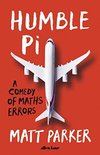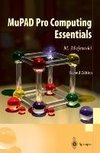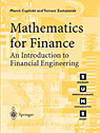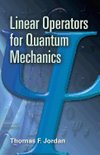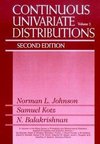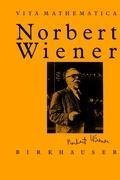
-
 Anglický jazyk
Anglický jazyk
Norbert Wiener 1894-1964
Autor: Pesi R. Masani
1 Prologue.- A) America¿s second Leibniz. B) The difficulties of a biographer. C) Scope and focus. D) Poetry, prose and mathematical symbolism. E) Policy as to mathematical usage.- 2 Count Tolstoy and Wiener¿s Father.- Solomon and Leo Wiener. The gift of... Viac o knihe
Na objednávku, dodanie 2-4 týždne
49.49 €
bežná cena: 54.99 €
O knihe
1 Prologue.- A) America¿s second Leibniz. B) The difficulties of a biographer. C) Scope and focus. D) Poetry, prose and mathematical symbolism. E) Policy as to mathematical usage.- 2 Count Tolstoy and Wiener¿s Father.- Solomon and Leo Wiener. The gift of tongues. Tolstoyan conversion and arrival in New Orleans. Mutualistic communities in the 1880s. Leo¿s ¿Mark Twain¿ characteristics: ¿the Russian Irishman¿. Marriage and family. Professorships at Missouri and Harvard.- 3 New England and Wiener¿s Early Training, 1901¿1905.- Norbert¿s Cambridge home. Early biological curiosities. Peabody School and Leo¿s tutelage. The ¿avenger of blood¿. Infantile maladroitness and threat of myopia. Old Mill Farms and Ayer High School. Love for the democracy of the New England town.- 4 Harvard and Wiener¿s University Training, 1906¿1913.- A) An eleven-year-old freshman at Tufts College. B) A semester in zoology. C) The ¿black year¿ at the Sage school of philosophy. D) The return to Harvard.- 5 Bertrand Russell and Wiener¿s Postdoctoral Years, 1914¿1917.- A) Wiener¿s emancipation. B) The doctrine of types. C) The Tractatus and logical empiricism. D) Wiener¿s philosophical activity. E) Columbia and its word-minded philosopher (1915). F) Harvard and the Docent Lectures (1915¿1916). G) The unpleasant stint in Maine (1916). Note: The Peano postulate system.- 6 World War I and Wiener¿s Military Yearnings.- The young war enthusiast. Futile efforts to enlist in the armed forces. Staff work with the Encyclopedia Americana. Computer at the U.S. Army Proving Grounds. Private in the U.S. Infantry. Fowlersque touch.- 7 From Postulate Systems to the Brownian Motion and Potential Theory.- A) Wiener joins the Massachussetts Institute of Technology. B) The relation of space and geometry to experience [22a]. C) Postulate systems. D) The Brownian motion. E) Theory of the potential. Note 1: Boolean algebra. Note 2: Algebraic field. Note 3: The Brownian movement. Note 4: The ¿Borel¿ terminology. Note 5: Hausdorff dimension.- 8 The Allotment of National Income, Marriage, and Wiener¿s Academic Career.- Slow promotion and resulting competitiveness. Mal-allocation of national income. Margaret Engemann and marriage. Search for positions abroad.- 9 From Communications Engineering to Generalized Harmonic Analysis and Tauberian Theory.- A) Harmonic analysis. B) Heaviside¿s operational calculus [26d, 29c]. C) From power to communications engineering. D) Generalized harmonic analysis. E) Tauberian theory. F) The intensity, coherence and polarization of light. Note 1: A proof of ¿ 9A (9). Note 2: Historical remarks. Note 3: Spectral synthesis. Note 4: Conditional Banach spaces.- 10 Max Born and Wiener¿s Thoughts on Quantum Mechanics and Unified Field Theory.- A) The Uncertainty Principle in classical physics. B) The collaboration with Max Born. C) The work with Struik and Vallarta on unified field theory. D) The philosophical interlude. Leibniz and Haldane. E) Quantum theory and the Brownian motion. Hidden-parameters. Note: The mapping M?.- 11 The Collaboration with E. Hopf and R.E.A.C. Paley.- A) Radiative equilibrium in the stars. B) Significance of the Hopf-Wiener equation; causality and analyticity. C) Paley and the Fourier transformation in the complex domain.- 12 Birkhoff¿s Theorem and the Consolidation of Wiener¿s Ideas on Statistical Physics.- A) The need for ergodicity in Gibbsian statistical mechanics. B) Wiener¿s work in Ergodic Theory. C) The contingent cosmos, noise, and Gibbsian statistical mechanics. D) The Second Law of Thermodynamics. Entropy. E) The homogeneous chaos and the Wiener program in statistical mechanics. F) Anisotropic time and Bergsonian time. G) Information, negentropy and Maxwell¿s demon. Note 1: Definition of the Hamiltonian. Note 2: Thermodynamic entropy. Note 3: Boltzmann statistical entropy. Note 4: Proof of equality of entropy and information.- 13 Lee, Bush, and Wiener¿s Thoughts on Networks and Computers.- A) The analogue computer program at MIT. The Wiener integraph. B) The Lee-Wiener network. C) Further work with Lee. The refugee problem. Visit to the Orient. D) Wiener¿s 1940 memorandum on an electronic computer for partial differential equations. Note 1: The Wiener integraph. Note 2: Proof of the relation ¿ 13B (3). Note 3: The Lee-Wiener network. Note 4: Scanning procedure to solve the PDE.- 14 Bigelow and Anti-Aircraft Fire Control, 1940¿1945.- A) Project D.I. C. 5980: Its military and scientific significance. B) Idealization of the flight trajectory and resulting tasks. C) The mathematical theory. D) Operation of the anti-aircraft predictor. E) Resolution of the man-machine concatenation. F) The problem of transients. G) Secrecy, overwork and tension. H) Kolmogorov¿s paper and prediction theory. I) The Kolmogorov-Wiener concatenation. Note 1: Bigelow¿s design. Note 2: The equation ¿ 14C (3); theory of instrumentation.- 15 Arturo Rosenblueth and Wiener¿s Work in Physiology.- A) Rosenblueth, friend and philosopher. B) Teleology in the animal and the machine. C) Mexico, and the return to physiology. The heart. D) Muscle clonus. E) The spike potential of axons. F) The statistics of synaptic excitation. G) Voluntary, postural and homeostatic feedback. The moth-cum-bedbug. Note 1: The nervous system. Note 2: Spike potential of axons.- 16 McCulloch, Pitts and the Evolution of Wiener¿s Neurophysiological Ideas.- A) McCulloch, the poetic and mathematico-logical neurologist. B) The Turing machine. C) The computing and pattern-recognizing abilities of the brain. D) Sensory and muscular-skeletal prosthesis. E) The computer as prosthesis for the brain. F) Brain waves and self-organization. Note: Structure of the Turing machine.- 17 The Cybernetical Movement and von Neumann¿s Letter, 1946.- A) The Teleological Society. B) The parallel evolutions of von Neumann and Wiener. C) Von Neumann¿s letter on the direction of cybernetical research; molecular biology. D) Wiener¿s thoughts on molecular biology.- 18 Cybernetics.- A) Cybernetics and its historical origins. B) The subject-matter of cybernetics. C) Is cybernetics a science? D) Soviet views on cybernetics. E) Ontogenetic learning. F) Phylogenetic learning and non-linear networks. G) The distinction between scientific inquiry, and stratagem or contest. Note 1: Comparison with life processes. Note 2: Mathematical representation of non-linear filters.- 19 The Second Industrial Revolution and its Educational, Economic and Social Challenges.- A) Automatization and the labor movement. B) The educational challenge. C) Anti-homeostatic aspects of the American economic system. D) Wiener¿s economic ideas. E) The control of conflict in civil society. F) Communal information. G) The grammar of the social sciences. H) Wiener and Marxism.- 20 Wiener on Global Policy and Military Science; von Neumann¿s Position; Science and Human Welfare.- A) Wiener¿s thoughts on geopolitics. B) Wiener¿s letter to Walter Reuther on geopolitics, and von Clausewitz¿s principles on war. C) Type-classification in military science. D) The pitfalls in computerized atomic war games. Time scales. E) Synopsis of Wiener¿s military thought. F) Von Neumann¿s position; science and human welfare. G) The Black Mass, twentieth century. Note: Von Clausewitz¿s principles of war.- 21 Wiener¿s Excursion into the Religious Domain.- A) The problem of evil. B) Phylogenetic corruption, the Fall. Homo peccator. C) Redemption: Mythic perception and faith as integral parts of man¿s ascent. D) Redemption: Self-abnegation and duty. E) The long-time State. The mandate from heaven. F) Sin grows with doing good: Tragedy and catharsis. G) Rational Logos, or rational and altruistic Logos?.- 22 Wiener¿s Literary Predilections and Initiatives. His Concept of Art.- A) Wiener¿s literary work. B) Wiener¿s theatrical initiatives. C) The mathematician¿s credo. D) Why mathematics is a fine art. E) The variance between Wiener¿s and Halmos¿s views on mathematics and art. The scholastic position. F) Wiener¿s thought on machine creativity.- 23 Wiener, the Man and the Teacher: Authenticity and Prejudice in his Attitudes and Writings.- A) The lovable quirk. B) Wiener as public figure and teacher. C) Resignation from the National Academy of Sciences; muddled ideas on science academies. D) Unobjective attitude towards Harvard. E) Wiener and George David Birkhoff.- 24 Epilogue.- Academic Vita of Norbert Wiener.- Doctoral Students of Norbert Wiener.- The Classification of Wiener¿s Papers.- Bibliography of Norbert Wiener.- Defense Department Documents.- References.- Name Index.- Photograph Index and Credits.
- Vydavateľstvo: Birkhäuser Basel
- Rok vydania: 1989
- Formát: Hardback
- Rozmer: 241 x 160 mm
- Jazyk: Anglický jazyk
- ISBN: 9783764322465
